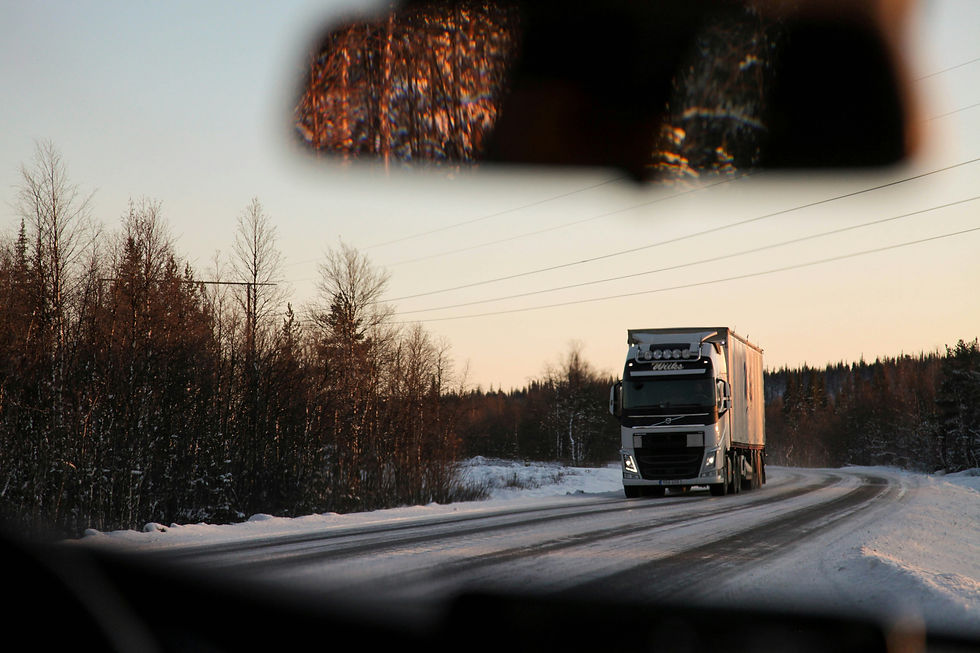Securement of goods in road transport
- weronika
- Apr 18, 2024
- 2 min read

Securement of goods is one of the most crucial things regarding road transport. Optimal use of cargo space and proper arrangement of goods are matters covered by legal regulations. However, what else do we need to know when securing goods?
Photo by Roberto Hanas on Unsplash
➡️ Correct arrangement of goods.
It is supposed to care about the proper force of pressure on the vehicle's axles. The cargo ought to be deployed steadily. It will help lower fuel consumption, but what is more significant, during an emergency stop or sharp turn - the cargo won't relocate and won't be dangerous to people on the road.
➡️ Regulations by law.
Proper securement of goods in the road transport regulate:
🔸 Directive 2014/47/EU of the European Parliament and the Council
🔸 Road Transport Act
🔸 CMR convention
🔸 ADR convention
➡️ The goods don't fill the whole cargo area.
🔸 LASHING CHAINS
Will do well while transporting one and heavy nondimensional cargo. Will lock the goods, prevent the relocation.
🔸 LASHING STRAPS
Like above, it will work out with irregular good. However, it is a universal tool that can used when transporting pallets. Straps are the piece of equipment of almost every truck. Those are selected by cargo weight and attached to the hitch located on the trailer. Pallets are secured by pulling the corner elements of the goods in opposite directions.
🔸BOLTING
It involves locking the goods inside the vehicle. It is only possible if the goods are sufficiently stiff. You can lock the goods using long beams, serving as wedges.
🔸DUNNAGE BAGS
Can be exposed to high frictional forces, so dunnage bags are placed between large blocks of goods.
🔸 TRANSPORT BEAMS
Can be attached between goods. It will prevent the load from sticking to the side walls of the vehicle.
🔸 DIAGONAL AND TRANSVERSE STRIPES
Are often used in containers and are loved for their versatility. They will serve both as a buffer between loads and as a base.
➡️ What are the responsibilities of particular persons during transport?
🔸 From the point of shipment to the collection, the CARRIER is responsible for the goods. He must comply with transport law and safety standards so that the cargo reaches its destination intact.
🔸 It is the DRIVER's responsibility to secure the goods rightly. Domestic and foreign legal rules regulate it.
🔸 The SENDER is responsible for securing and properly packing the goods for shipment.
🔸 It is the RECIPIENT's responsibility to accept the cargo and ensure unloading, avoiding any damage to the goods. He must also check the condition of the received goods and report any damage.
📢 Securing goods affects the driving safety of the driver and people on the road. Let's make sure that our transports are safe and our loads are well secured.
Comments